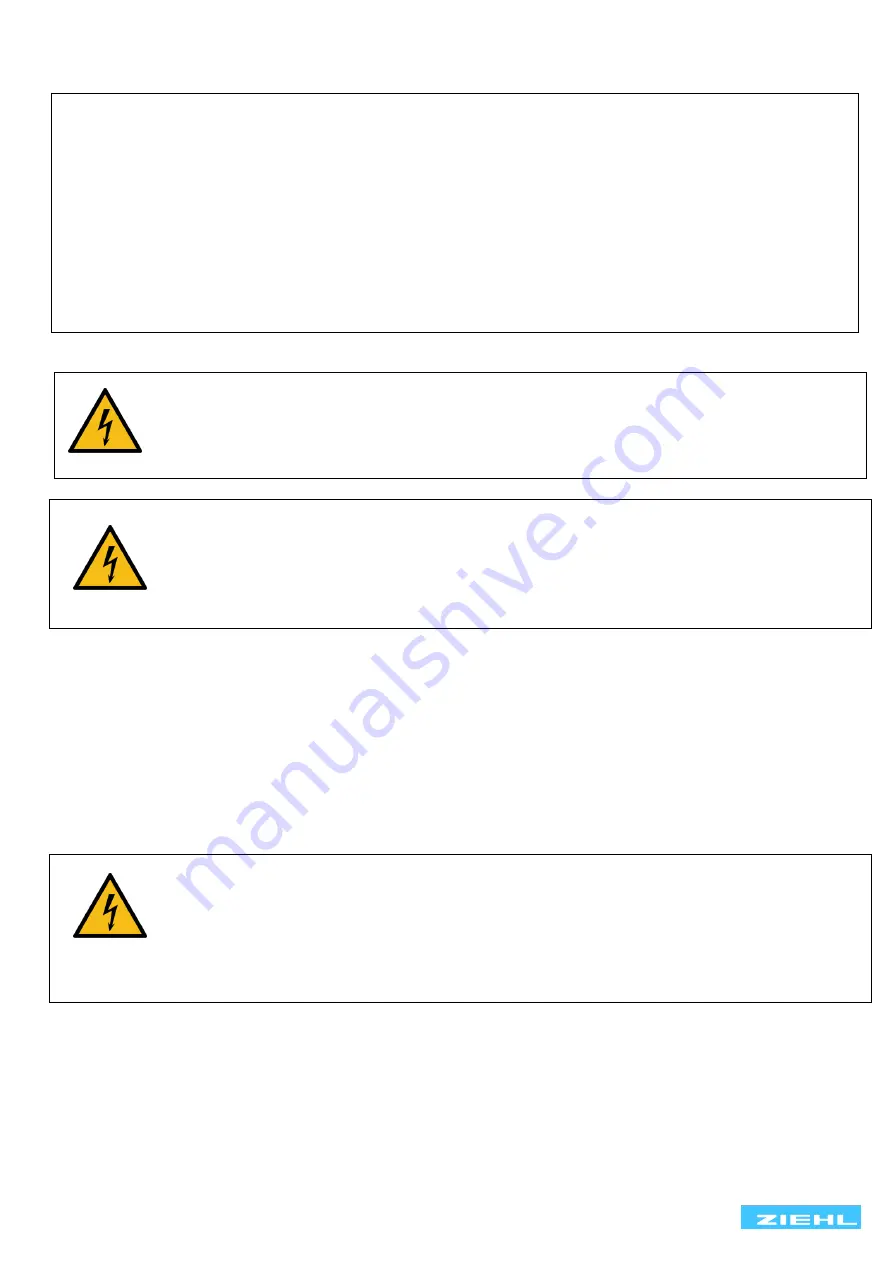
STWA1
12050-0701-00
Page
2 / 4
www.ziehl.de
3
Important Information
To use the equipment flawless and safe, transport and store properly, install and start professionally and
operate as directed.
Only let persons work with the equipment who are familiar with installation, start and use and who have
appropriate qualification corresponding to their function. They must observe the contents of the
instruction’s manual, the information which are written on the equipment and the relevant security
instructions for the setting up and the use of electrical units.
The equipment is built according to DIN / EN and checked and leave the plant according to security in
perfect condition. If, in any case the information in the
instruction’s manual is not sufficient, please contact
our company or the responsible representative.
Instead of the industrial norms and regulations written in this instruction manual valid for Europe, you must
observe out of their geographical scope the valid and relevant regulations of the corresponding country.
DANGER!
Hazardous voltage!
Will cause death or serious injury. Turn off and lock out all power
supplying this device before working on this device.
DANGER!
In a non-loaded (open) secondary circuit of the current transformer STWA1 high
voltages are induced at the secondary terminals.
For primary currents > 16 A, this voltage can be dangerous for human beings.
An "open mode", i.e. operation of the current transformer without secondary wiring,
should be avoided.
4
Installation
The current transformer STWA1 is intended for installation in dry rooms. The STWA1 can be mounted as
follows:
•
simply plug over the conductor to be monitored
•
STWA1 e.g. secure with cable ties
DANGER!
The current transformer STWA1 is suitable for current detection in insulated cables.
At applications with non-insulated conductors the operator must take care for touch
safety. The insulation of the connection cables of the STWA1 must not be damaged.
When laying the cable, make sure that there is sufficient distance to not
isolated live parts (such as busbars).
If necessary, use an additional electric insulation hose.






















